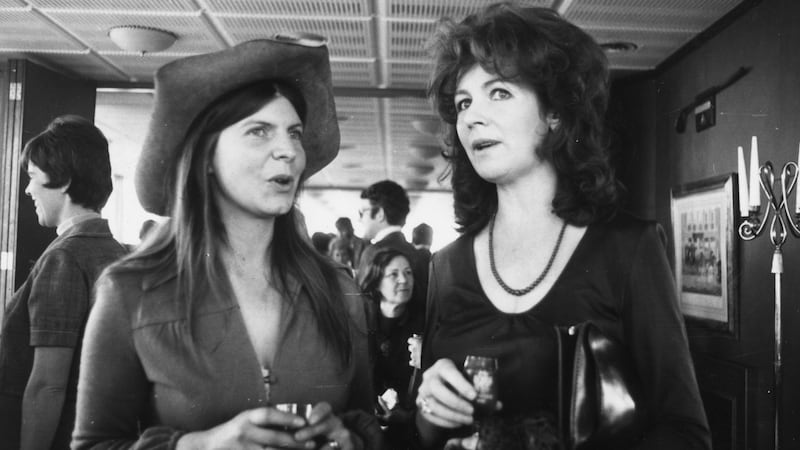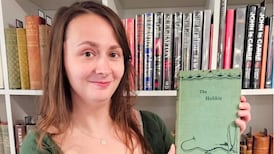During the 1970s, despite an industry slanted male, women writers began to assume a central place in literature. Today, women writers and publishers could be said to dominate publishing, such has been the strength of this movement. Indeed, a recent Sunday Times article wondered if young male novelists were being left on the shelf and whether a men’s prize was the answer.
Those who have fought for decades to get women’s writing published, reviewed and on to prize lists could be forgiven a moment of schadenfreude. After all, it is not so long ago that the women’s prize was set up to compensate for the dearth of women on the Booker shortlist, or since Seamus Deane, editor of the three-volume Field Day Anthology of Irish Writing “forgot” to include women, necessitating the addition of two further volumes.
But as champions of women’s writing know, it is always better to be inclusive and the literary field is impoverished when good books are left out. Better then to celebrate the success of women’s writing while keeping one eye on the statistics. Over the coming months, this series will look back at 50 years of some of the best women’s fiction, non-fiction and poetry.
Betty Friedan’s The Feminine Mystique (1963) and Germaine Greer’s The Female Eunuch (1970), among other texts, were indebted to Simone De Beauvoir’s earlier The Second Sex (1949, English translation by Howard Parshley, 1953). They gave voice to mid-century women dissatisfied with their lot and sparked the “second wave” of feminism. These books exposed the patriarchal bias in the field of literature and debunked myths about what literature should and could be and do, and together with increased access to education for women in the 1960s, paved the way for the novelists, essayists and poets who were to follow.
I encountered The Female Eunuch in the early 1990s as a conflicted young feminist. On the one hand, I believed that compared to my mother’s generation – married, barred from their jobs and stuck at home with children – women had achieved equality, yet I was enrolled on a master’s degree in women’s studies to figure out why there had been almost no women on my four-year undergraduate curriculum in English literature. The docs-wearing, globe-trotting, independent part of me found Greer’s book dated, or at least unnecessary, while the nascent writer who could not find herself in the canon saw what Greer saw: that women had been cut off from their creativity and capacity for action and transformation.
For Erica Jong these feminist texts made it possible to publish her first novel (Salon, February 2006). Vaguely aware of its iconic status, I sought out Fear of Flying in Acres of Books in Long Beach, California, where I was then living. Having come of age in 1980s Dublin, where we had the pill by now, for God's sake, and condoms, I was confident that this old book would hold little interest for me. I opened the faintly musty cover and Isadora Wing drew me in from her first line. "There were 117 psychoanalysts on the Pan Am flight to Vienna and I'd been treated by at least six of them. And married a seventh." It is this stifling second marriage which leads Isadora, author of erotic poetry (with apologies to Jong for the asterisks), "to evolve [her] fantasy of the zipless f***. The zipless f*** was more than a f***. It was a platonic ideal. Zipless because when you came together zippers fell away like rose petals, underwear blew off in one breath like dandelion fluff. Tongues intertwined and turned liquid. Your whole soul flowed out through your tongue and into the mouth of your lover".
Jong’s fearless portrayal of a woman artist exploring her sexuality and her creativity was shocking in its frankness (reader, there wasn’t even the whiff of a zipless “feck” in 1980s Dublin) and very funny. It has sold more than 27 million copies to date.
Women writing about sex was ground-breaking and controversial, as Edna O’Brien knew all too well. Her Country Girls trilogy had been banned in Ireland in the 1960s for her frank treatment of sexuality; little did church and State suspect what O’Brien had in store for them in the 1970s. A year before Jong’s Isadora Wing set off on her quest for sexual freedom, O’Brien’s Mary Hooligan was holding forth in a four-poster bed, ably speaking back to Molly Bloom unrepentant in her sexual meanderings. Night is the experimental novel O’Brien wrote after taking LSD with psychiatrist RD Laing, whom she describes as “half-lucifer, half-Christ”, in which she disrupts language and subverts her own writing and that of her predecessors. I began reading O’Brien in the early 1990s for my master’s thesis with ever-widening eyes; these were books from my granny’s bookshelves!

The early 1970s marked the beginning of a new renaissance for black women’s writing, with Toni Morrison’s novels The Bluest Eye and Sula, and Maya Angelou’s autobiographical I Know Why the Caged Bird Sings coming out within a few years of each other. Alice Walker wrote about the suppression of black women’s writing in Ms. magazine after she had discovered the unmarked grave of Zora Neale Hurston, the author of four novels, short stories, plays and many anthropological essays, and a shining light of the Harlem Renaissance; this would lead to Walker’s collection In Search of Our Mothers’ Gardens in the 1980s. Like weeds overgrowing a grave, the status quo has a way of reasserting itself (which is why it is perhaps premature to mourn the neglect of the young male author).
Women in the early 1970s were speaking out against race and gender inequality, and war, and the destruction of nature. They were advocating for change and their voices were being heard; and they were achieving recognition, albeit somewhat grudgingly. Nadine Gordimer, continuing her chronicling of apartheid in South Africa, won the Booker-McConnell prize in 1974 for her novel, The Conservationist, although the prize was split with a man. The previous year, Adrienne Rich had won the National Book Award for her feminist collection, Diving into the Wreck; it too was split with a man. In response, Rich shared her prize with fellow nominees, Audre Lorde and Alice Walker “on behalf of all women”. Both Gordimer’s and Rich’s texts remain relevant, as I have been discovering lately while reading them within the context of ecocriticism and environmental writing.
Not only were women breaking new ground with their stories, essays and poems, they were creating new spaces for their work, too. Judy Blume did not appear on this side of the Atlantic in time for me, but the generations after mine devoured these pioneering books which had been written specifically for teenagers, tackling difficult or controversial subjects. For author, editor and creative writing teacher, Claire Hennessy, “Judy Blume has always been the writer who was honest with you when other adults weren’t”. To date, Blume has sold more than 75 million books.
The success of women’s writing in the 1970s was enabled and supported by the establishment of publishers like The Feminist Press (1970) and Ms. (1971) in the US, Virago (1973) and The Women’s Press (1978) in the UK, and here in Ireland Arlen House (1975) and Attic Press (1978). Beyond the anglophone world, too, women were insisting their way into the canon: women like Annie Ernaux, and Hélène Cixous (France); Ingeborg Bachmann (Germany); María Luisa Bombal (Chile); Clarice Lispector (Brazil); Marta Traba (Argentina); Nawal El Saadawi (Egypt), to name but a few. El Saadawi’s Woman at Point Zero, about a woman on death row in Cairo for murdering her pimp, is as radical and courageous and starkly disturbing today as when I read it first in the 1990s.

I was a child in the 1970s, so I read the women writers of that decade after the event, and what I found there shocked, surprised and delighted me. Here was exciting, ground-breaking, canon-defying, experimental writing, often far more daring that what passed as risk-taking or controversial in the decades which followed. I often wonder how the trajectory of my writing life might have differed had some of these texts appeared on my undergraduate syllabus. If, like me, you missed them first time round, I encourage you to take the plunge and catch up on some or all of the titles mentioned here (with more to come). You will not be disappointed.
Paula McGrath is author of Generation and A History of Running Away and is assistant professor of creative writing at UCD
- I Know Why the Caged Bird Sings by Maya Angelou (1969) An account of the author's early years and how books helped her to overcome racism and sexual trauma.
- The Bluest Eye by Toni Morrison (1970) Too dark-skinned even for her own black community, a young girl believes she could be beautiful if she only had blue eyes.
- Are You There God? It's Me, Margaret by Judy Blume (1970) Bloom's best-known book deals with adolescent Margaret's struggles with puberty and religion.
- The Female Eunuch by Germaine Greer (1970) A "second wave" feminist's bible.
- Night by Edna O'Brien (1972) Mary Hooligan recounts her life and loves from her four-poster bed in rich, sensuous prose.
- Diving into the Wreck by Adrienne Rich (1973) Fierce, provocative poems on the pain of women's and queer women's lives throughout history.
- Fear of Flying by Erica Jong (1973) A woman struggles to find her place in the world through no-ties sexual encounters.
- Sula by Toni Morrison (1973) Friendship and betrayal and what it means to be a black women in America.
- The Conservationist by Nadine Gordimer (1974) Apartheid as seen through the eyes of Mehring, a wealthy white man and weekend farmer, told through complex and poetic prose.
- In Search of Zora Neale Hurston by Alice Walker (1975) Walker wrote about the suppression of black women's writing after discovering the unmarked grave of Zora Neale Hurston, a shining light of the Harlem Renaissance.
- Woman at Point Zero by Nawal El Saadawi (1975, translated to English in 1983 by Sherif Hetata) Sentenced to death for murdering her pimp, Firdaus tells her story from her prison cell.










